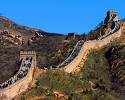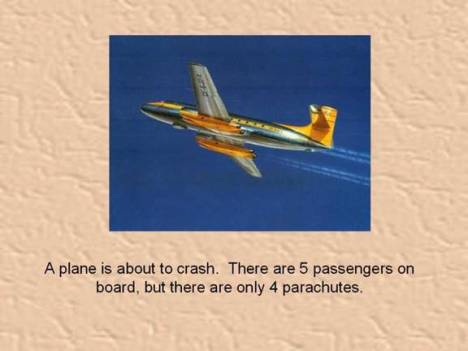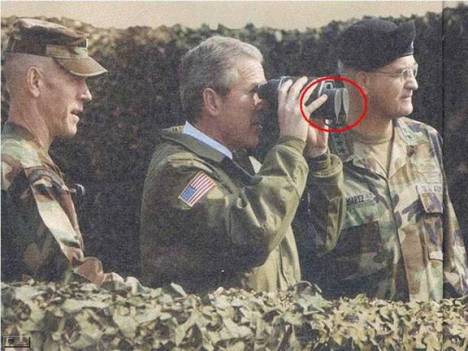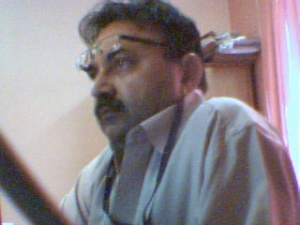Important do Read
MOST OF US KNOW ABOUT USE OF MICROWAVE BUT I FEEL THAT THIS ONE NEEDS TO BE SHARED!
Micro waved water – one MUST read
A 26-year old guy decided to have a cup of coffee. He took a cup of water and put it in the microwave to heat it up (something that he had done numerous times before).
I am not sure how long he set the timer for, but he told me he wanted to bring the water to a boil. When the timer shut the oven off, he removed the cup from the oven. As he looked into the cup, he noted that the water was not boiling, but instantly the water in the cup ‘blew up’ into his face.
The cup remained intact until he threw it out of his hand but all the water had flown out into his face due to the build up of energy. His whole face is blistered and he has 1st and 2nd degree burns to his face, which may leave scarring. He also may have lost partial sight in his left eye. While at the hospital, the doctor who was attending to him stated that this is fairly common occurrence and water (alone) should never be heated in a microwave oven. If water is heated in this manner, something should be placed in the cup to diffuse the energy such as: a wooden stir stick, tea bag, etc. It is however a much safer choice to boil the water in a teakettle.
General Electric’s (GE) response:
Thanks for contacting us. I will be happy to assist you. The e-mail that you received is correct. Micro waved water and other liquids do not always bubble when they reach the boiling point. They can actually get superheated and not bubble at all. The superheated liquid will bubble up out of the cup when it is moved or when something like a spoon or teabag is put into it.
To prevent this from happening and causing injury, do not heat any liquid for more than two minutes per cup. After heating, let the cup stand in the microwave for thirty seconds before moving it or adding anything into it.
If you pass this on … you could very well save someone from a lot of pain and suffering.
Tsunami Incredible Video Footages
[YouTube=http://www.youtube.com/v/WhuqKhXZkkY&hl]
Talking to your partners makes you feel better, even if they do not listen
 Telling your partner about your day may be good for your mental health, but it does nothing for them, according to a new study.
Telling your partner about your day may be good for your mental health, but it does nothing for them, according to a new study.
The study suggests that the benefits of sharing information appear to be one-sided, as it does nothing for the other person’s mental health.
The findings are based on study, led by Dr Andrea Horn, of the University of Fribourg, Switzerland.
The study, conducted to determine whether telling your partner everything was good for your psychological health, involved 80 couples.
“It’s likely that telling your partner about your day enables you to better regulate your own emotions, which results in these positive psychological health effects,” the Telegraph quoted her, as saying.
“It may also promote feelings of intimacy, which increases relationship satisfaction. However it was interesting we didn’t find the same effects for the other person.
“It could be the process of telling someone about your daily events, not the response, that matters. So you may want to share more with your partner – if not for their benefit, then for your own,” she added.
The study will be presented at the British Psychological Society’s conference at Bath University. (ANI)
IIM Topper Interview Video
Here are the IIM topper interview Video.I think which are very helpful for those who want to appear into CAT,GMAT,GRE Exam
Physics Experiment:To Khow How universe created
The Large Hadron Collider (LHC) will smash two beams of particles head-on at super-fast speeds, recreating the conditions in the Universe moments after the Big Bang.
 The Alice detector will investigate the moments after the Big Bang
|
Scientists hope to see new particles in the debris of these collisions, revealing fundamental new insights into the nature of the cosmos.
They will be looking for new physics beyond the Standard Model – the framework devised in the 1970s to explain how sub-atomic particles interact.
The Standard Model comprises 16 particles – 12 matter particles and four force-carrier particles. The Standard Model has worked remarkably well so far.
But it cannot explain the best known of the so-called four fundamental forces: gravity; and it describes only ordinary matter, which makes up but a small part of the total Universe.
Also, one of the most important particles in the Standard Model – the Higgs boson – has yet to be found in an experiment.
Today, the Standard Model is regarded as incomplete, a mere stepping stone to something else. So the LHC should help reinvigorate physics’ biggest endeavour: a grand theory to explain all physical phenomena in Nature.
However, some physicists point out that Nature has a habit of throwing curve balls. And some of the most exciting discoveries at the LHC could be those that no-one expects.
There is an essential ingredient missing from the Standard Model. Without it, none of the 16 particles in the scheme would have any mass.
An extra particle is required to provide all the others with mass – the Higgs boson. This idea was proposed in 1964 by physicists Peter Higgs, Francois Englert and Robert Brout.
According to their theory, particles acquire mass through their interactions with an all-pervading field, called the Higgs field, which is carried by the Higgs boson. It is the only Standard Model particle that has yet to be observed experimentally.

As such, the search for the Higgs has become something of a cause celebre in particle physics. Finding the Higgs is one of the main science objectives for the LHC.
The Atlas and CMS experiments are both designed to see it, if it is there. This means that scientists working on these respective experiments will be competing to see it first, once the LHC begins its “science run” sometime in 2009.
The US Tevatron particle accelerator, though less powerful than the LHC, is also engaged in the hunt for the Higgs.
All the matter that we can see in the Universe – planets, stars and galaxies – makes up a minuscule 4% of what is actually out there. The rest is dark energy (which accounts for 70% of the cosmos) and dark matter (26%).
Dark energy cannot be observed directly, but it is responsible for speeding up the expansion of the Universe – a phenomenon that can be detected in astronomical observations.

Like dark energy, dark matter can only be detected indirectly, as it does not emit or reflect enough light to be seen. But its presence can be inferred through its effects on galaxies and galaxy clusters.
Physicists know virtually nothing about the nature of either dark energy or dark matter. But they can speculate.
According to one idea, dark matter could be made up of “supersymmetric particles” – massive particles that are partners to those already known in the Standard Model.
A leading dark matter candidate is the neutralino, the lightest of these “super-partners”. And some theoretical physicists have proposed a link between the Higgs mechanism and dark energy.
Each basic particle of “ordinary” matter has its own anti-particle. Matter and antimatter have the same mass, but opposite electric charge.
For example, a proton has an anti-particle called an anti-proton (a proton with a negative charge). An electron has an anti-particle called a positron (an electron with a positive charge).
 What happened to the anti-matter that emerged from the Big Bang?
|
In the same way that an ordinary proton and electron can come together to form a hydrogen atom, an anti-proton and a positron can form an atom of anti-hydrogen.
When a particle of ordinary matter meets its anti-particle, the two disappear in a flash, as their mass is transformed into energy.
They are said to “annihilate” one another. But equal amounts of matter and anti-matter must have been produced in the Big Bang.
So why did matter and anti-matter not completely annihilate each another after the birth of the Universe?
Today, we live in a Universe almost entirely composed of ordinary matter. Scientists will use the LHC to investigate why this is, and what happened to all the anti-matter.
Attempts to unify gravity with the other fundamental forces have come to a startling prediction: that every known particle has a massive “shadow” partner particle.
 Atlas is one of the experiments that could find evidence for supersymmetry
|
All particles are classified as either fermions or bosons. A particle in one class has superpartner in the other class, “balancing the books” and doubling the number of particles in the Standard Model.
For example, the superpartner of an electron (a fermion) is called a selectron (a boson). Evidence for supersymmetry would enable the “unification” of three fundamental forces – the strong, weak, and electromagnetic – helping to explain why particles have the masses they have.
It would also give a boost to string theory – one stab at a grand “theory of everything”. But string theory is not dependent on discovering evidence for supersymmetry.
In addition to the four dimensions we already know about, string theory predicts the existence of six more.
Some physicists even think the existence of these extra dimensions could explain why gravity is so much weaker than the other fundamental forces. Perhaps, they argue, we are not feeling its full effects.
This might be explained if its force was being shared with other dimensions. If these extra dimensions do exist, the LHC could be the first accelerator to detect them experimentally.
At high energies, physicists could see evidence of particles moving between our world and these unseen realms. For example, they could see particles suddenly disappear into one of these dimensions.
Alternatively, particles originating from an extra dimension could suddenly appear in our world.
According to some physicists, the LHC can operate at high enough energies to generate mini-black holes.
However, the vast majority of particle physicists say there is no need for alarm. If any should be created, they should evaporate quickly.
 How a black hole might look if it is generated in the collider
|
A recent report dealing with the collider’s safety acknowledged the possibility that the LHC could create these primordial black holes.
The report says: “If microscopic black holes were to be singly produced by colliding the quarks and gluons inside protons, they would also be able to decay into the same types of particles that produced them.”
The suggestion that black holes could be made in the LHC has stoked fears in the online world that one of these micro-black holes could swell in size, swallowing up the Earth.
In March, plaintiffs requested an injunction in a US court stopping the LHC from switching on.
However, physicists stress that any such phenomena would be short-lived and thus would pose no threat to our planet. From BBC News
Great Wall of China

Long before tanks and long-range missiles became available for combat, militaries relied on less technologically advanced mechanisms to protect themselves against invaders. The Great Wall of China was designed to perform the most basic defensive war principle: Keep the good guys in and the bad guys out.
While China’s was not the first wall built to serve this purpose (Denmark, Korea and the Roman Empire all built walls prior), the Great Wall is arguably one of the world’s most famous and impressive man-made structures. The name “Great Wall of China” is largely a term bestowed upon the structure by Westerners. In fact, it has traditionally been known to the Chinese as the Wan Li Chang Cheng, which translates to “Ten Thousand Li Long Wall,” or “Long Wall of Ten Thousand Li” (li is a Chinese unit of length, with two li being equivalent to one kilometer).
So how great is the wall? Its reported length is widely disputed and ranges anywhere from a paltry 1,500 miles (2,414 kilometers) to 4,163 miles (6,700 kilometers) [source: Power, National Geographic]. To settle the debate once and for all, researchers began in 2007 what they believe will be a four-year trek to survey the dimensions and route of the wall. This may seem unnecessarily complex, but considering the intense and treacherous topography the Great Wall crosses over — including steep mountains, desert, grasslands and more — it’s easy to see why this is no simple feat. The study, which is being conducted by the State Administration of Cultural Heritage and the State Bureau of Surveying and Mapping, will record the wall’s length from east to west (from the Gobi Desert to the Yellow Sea), since the wall was built to protect against invaders from the north. And it’s not only the length of the wall that’s up for debate: It’s also difficult to pinpoint how many cities and provinces are included in the Great Wall’s layout. One Chinese tourism bureau states that the wall winds its way across nine cities and provinces: Beijing, Gansu, Hebel, Inner Mongolia, Liaoning, Ningxia, Shaanxi, Shanxi and Tianjin [source: Travel China Guide].
In this article, we’ll learn the history behind the Great Wall, whether or not it served its purpose well and how it eventually became obsolete. We’ll also take a look at the current state of the structure and how it’s being protected after years of abuse by both Mother Nature and humans alike. But first, who built the wall?
[YouTube=http://www.youtube.com/v/WKzFnhN8o04&hl]
Internet Acess In Rural Area
The India government has announced a $2-billion public-private partnership to provide broadband and internet connectivity in country’s rural areas.Union Minister of State for Communications and Information Technology Jyotiraditya Madhavrao Scindia, speaking at Global Telecom Summit here, said that $1.5 billion for the project would be generated from the private sector and the balance would be funded from government sources. This is part of the government’s scheme for extension of Knowledge Mission and initiatives taken by former Prime Minister Rajiv Gandhi.The minister also announced 112,000 broadband centers would be set up in rural areas across the country, within a year. This is part of the government’s scheme for extension of Knowledge Mission and initiatives taken by former Prime Minister Rajiv Gandhi.The minister announced 112,000 broadband centers would be set up in rural areas across the country, within a year.
-
Archives
- October 2009 (1)
- November 2008 (3)
- September 2008 (6)
-
Categories
-
RSS
Entries RSS
Comments RSS














You must be logged in to post a comment.